SANTA BARBARA (Day 6 - part 3)
We headed back through town to the car.
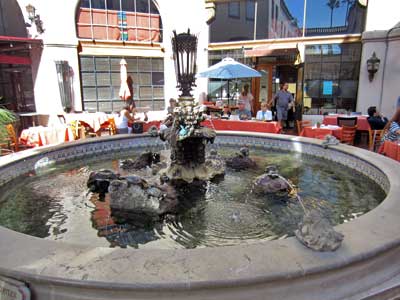
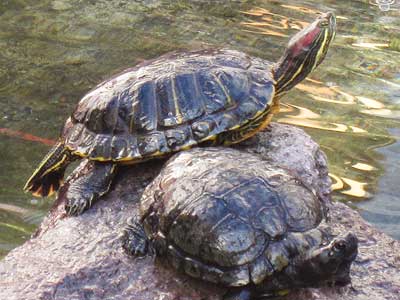
A turtle fountain with real turtles in La Arcada Courtyard!
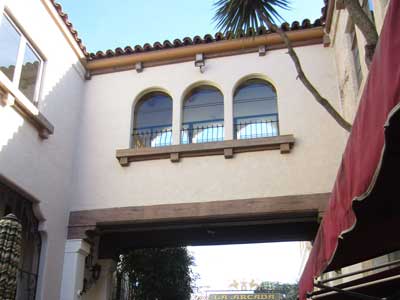
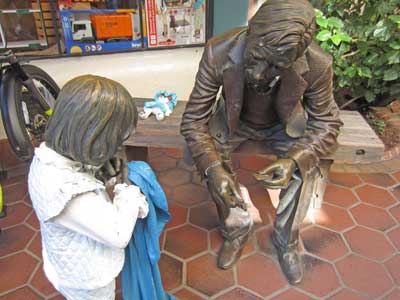
... "Generation Bridge" by J. Seward Johnson Jr. shows a man holding a Hershey's chocolate bar with his granddaughter
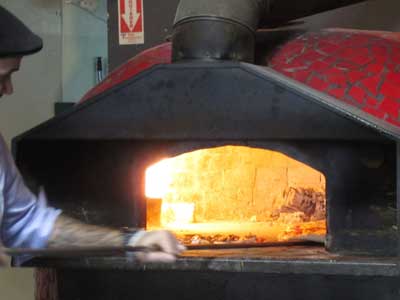
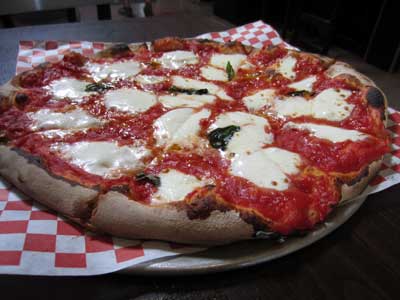
Lunch at Persona wood fired pizzeria
We then drove out to the mission.
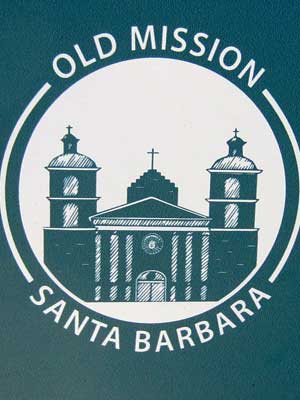
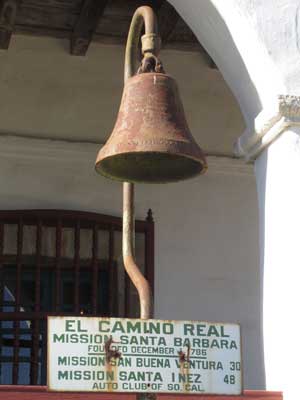
In 1524, Franciscan friars arrived in the Americas expressly to convert the indigenous people. In the 18th century, they were asked to help the Spanish Empire secure the frontier of New Spain. Through the missions, the locals were converted to Christianity and taught to become devoted citizens of a Spanish Colonial society. They became skilled craftsmen... carpenters, blacksmiths, masons, weavers and millers.
The first mission was built in 1769 in San Diego. Santa Barbara was the 10th (out of a total of 21), founded in 1786 by Father Fermin Francisco de Lasuen (1736 -1803) on December 4, the feast day of Saint Barbara. The previous year, Father Lasuen had become the second president of the California mission chain (after the death of Father Presidente Junípero Serra). He founded a total of nine missions and expanded many more.
The first chapel was built in 1787. It was just a log building with a grass roof and earthen floor. The current church is the fourth version and was built from stone (instead of adobe) from 1815 to 1820. The design was based on Roman ionic temples.
Originally, the missions were meant to be transitional institutions. The land taken from the local populations were held in trust, with the intention of one day returning them. But by the early 1800s, there was a growing desire in New Spain to be free from Spain, as well as from the Catholic church. This resulted in a war for Mexican independence from 1810 to 1820. The land, however, was not returned as promised. Instead, the Mexican governor of California sold parcels of land (or ranchos) to cattle ranchers... which then gave rise to a whole new society. Many of the indigenous communities suffered greatly. The native people here were the Chumash (descendants of the Canalino, a largely sea-based culture of late prehistoric times).
When Spanish ships stopped delivering supplies and money in 1810, the missionaries started pressing the Chumash for longer work hours and more productivity... for no additional compensation. The Franciscans also increased their efforts to suppress the native culture. In 1824, sparked by the beating of a young boy by a Mexican soldier, the Chumash rebelled. The revolt began in three missions (including Santa Barbara) and spread to the surrounding villages. Eventually a reconciliation was reached.
In 1833, the Mexican government passed a law which secularized and ended the mission system. California became a US state in 1850, and in 1865, President Abraham Lincoln granted the Catholic Church ownership of some of them again.
During this whole time, the friars also experienced changes. Most Spanish-born friars were replaced by Mexican ones, and in 1885, friars fleeing persecution arrived from Germany.
It was a self-guided tour, so we just followed the signs.
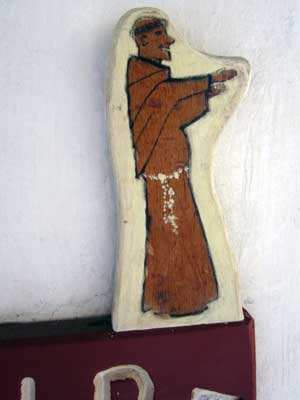
Our tour guide
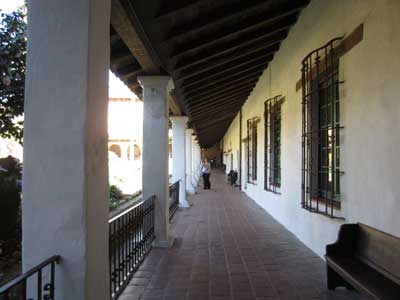
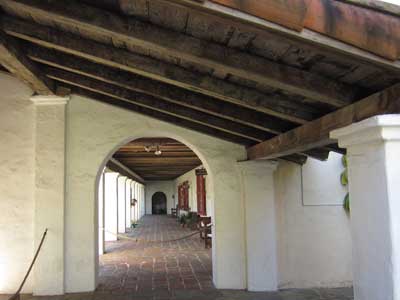
The walkways surrounding the inner quadrangle.
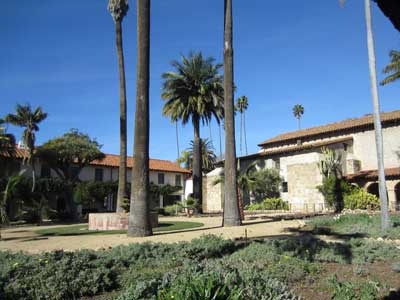
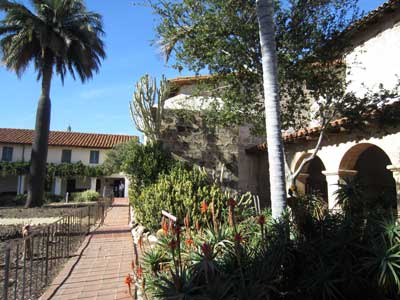
The inner quadrangle served as a communal gathering and work place. It was turned into a garden in 1873.

A map from 1906
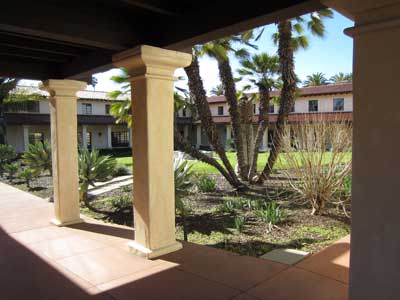
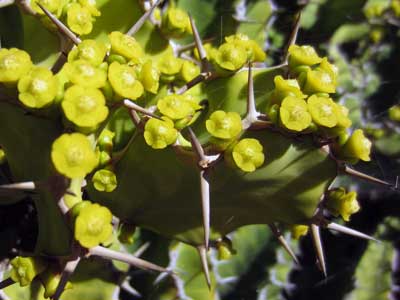
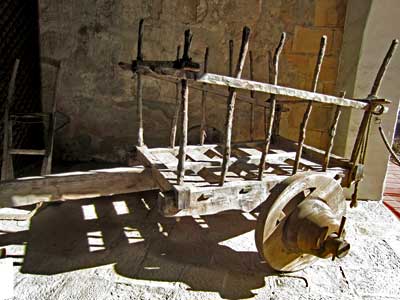
A carreta (ox cart) was designed to carry heavy loads over short distances. Most goods were brought to Santa Barbara by ship and then pulled up from the beach to the mission by these carts. This ones dates back to the late 1800s. Eventually they were replaced in the early 1900s by horses and wagons.
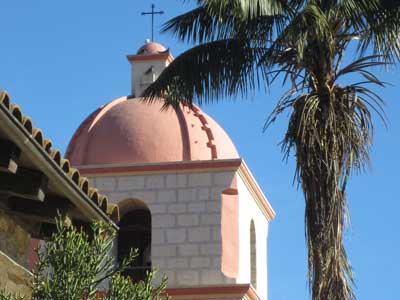
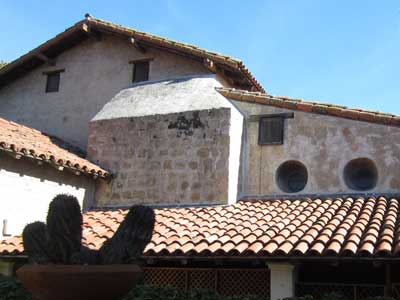
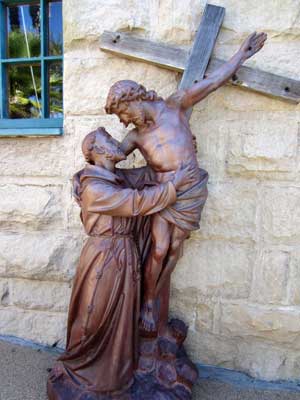
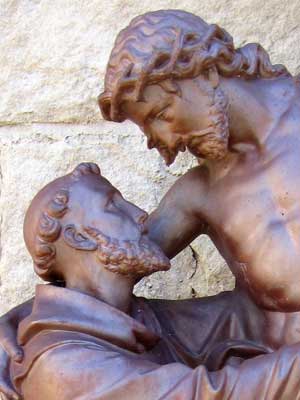
We entered the cemetery.
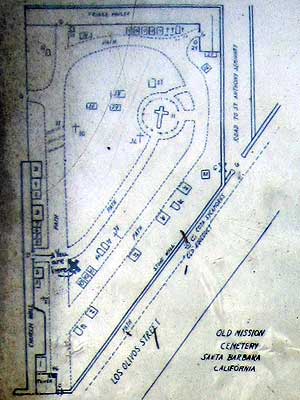
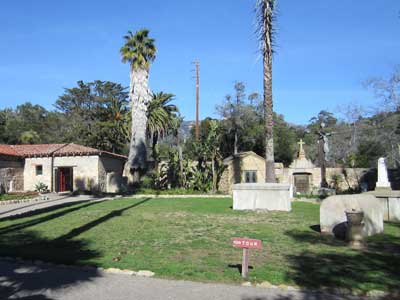
The cemetery was laid out in 1789. Prior to that, bodies were interred beneath the sanctuary floor (the church back then is not the same one as today). The mausoleum (wich also contains the friars' vault) was built in 1893. It contains the remains of 64 Franciscan friars, several nuns, a secular priest, and 44 laymen.
- The first Franciscan to be buried here was Fray Antonio Paterua in 1793. The second missionary was Fray Andres Dulanto in 1808. They were moved into a crypt in the church in 1820.
- The first Chumash was Cristobal "Manojo" Sulnahuit of the Saspili tribe in 1789, who had worked a master carpenter. Over 4,000 Chumash are buried here. During the mission period, the death rate was higher among the native people than among the Europeans, primarily because of all the new diseases the Europeans brought with them.
- Governor Jose Figueroa, the first Mexican-born governor of California, in 1835
- The first California bishop, Francisco Garcia Diego y Moreno, in 1846
- Juana Maria (a made-up name since no one could understand her) was an Native American woman who lived alone for 18 years on San Nicolas Island, having been unintentionally left behind. She was rescued when she was about 50 years old and brought to the mission. Unfortunately she was no longer used to regular food, and after 7 weeks, died of an overdose of fruit in 1853.
- It's highly possible that once the flesh decayed off the bones, they were dug up and moved to make room for more bodies.
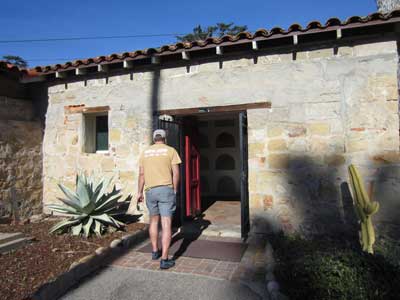
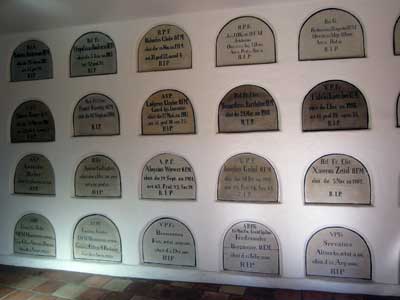
Entering the mausoleum ... the friars' vault
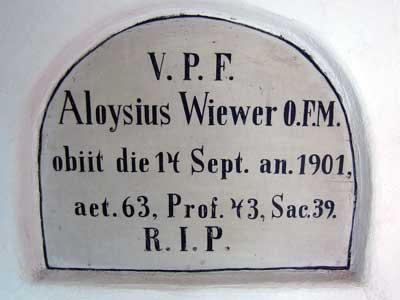

There were a large number of German names
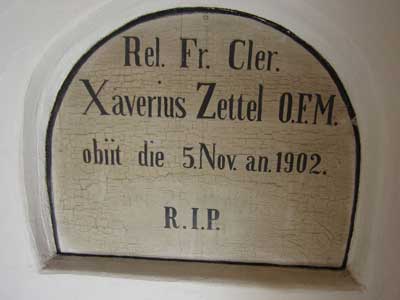

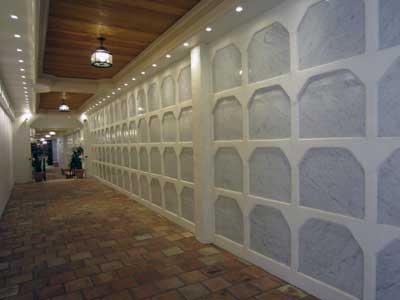
A hallway led a looooong way back to more rooms. These burial spots were apparently empty and available for purchase.
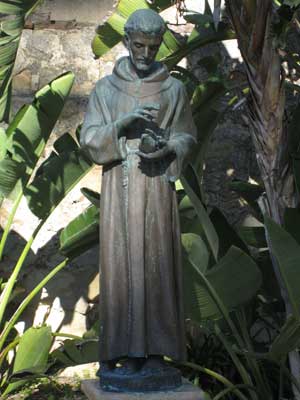
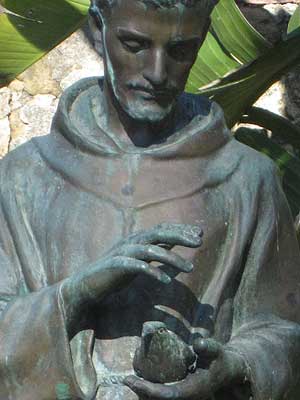
A statue of St. Francis of Assisi
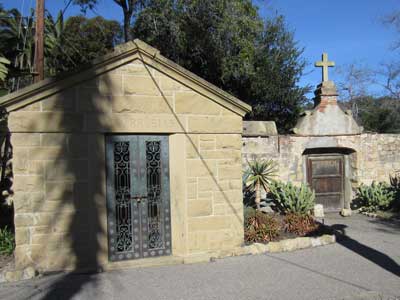
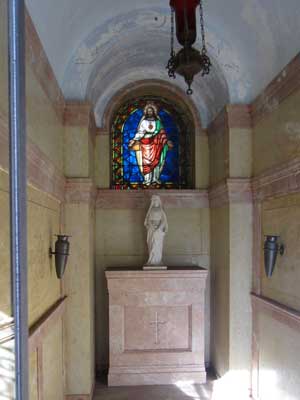
Various small crypts
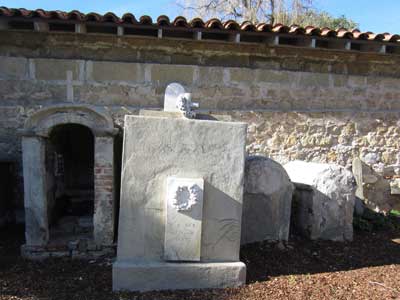
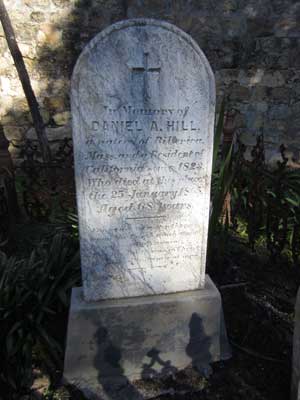
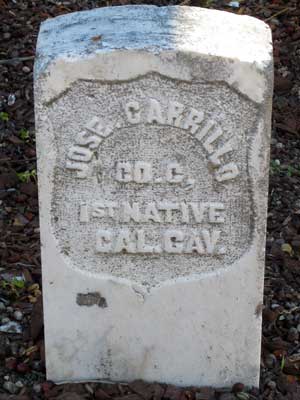
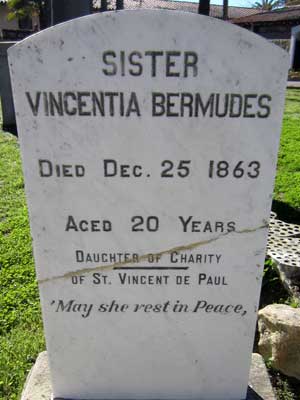
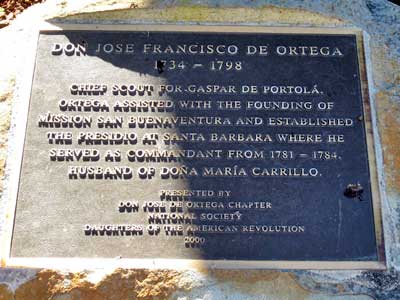
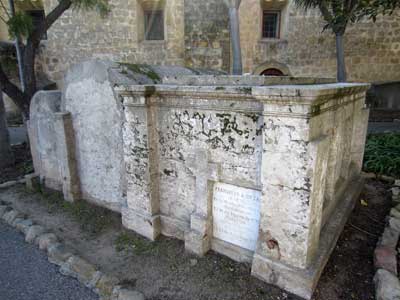
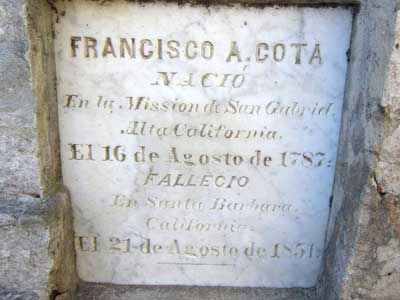
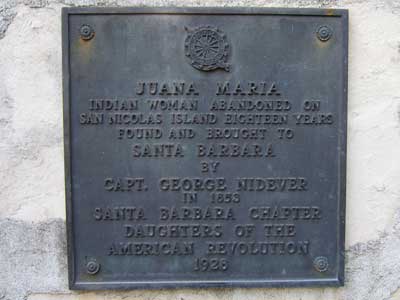
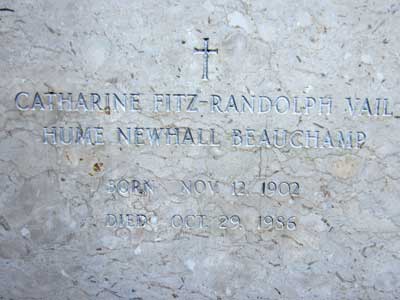
The abandoned Juana Maria (story from before) .... and (deep breath) Catharine Fitz-Randolph Vail Hume Newhall Beauchamp. Apparently her father, Edward Fitz Randolph Vail, directed the restoration of the mission after its destruction by an earthquake in 1925. He too is buried here along with several other family members. The other three names, Hume (possibly a marriage to William Mansur Hume), Newhall and Beauchamp, could be other family names or multiple marriages.
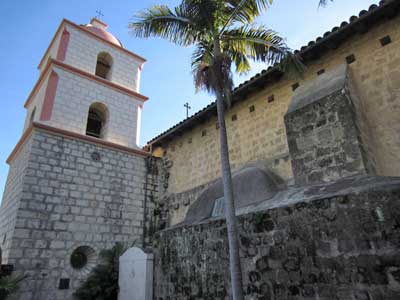
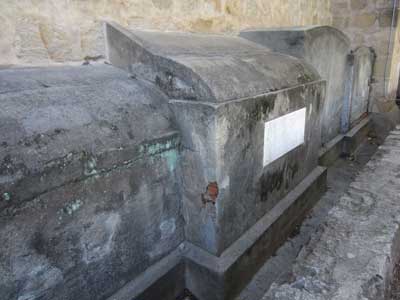

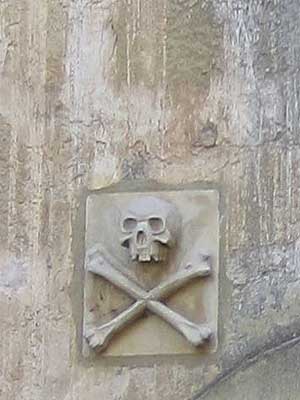
The entrance to the church ... A skull and crossbones often designated a cemetery in Spanish colonial days.
return • continue

